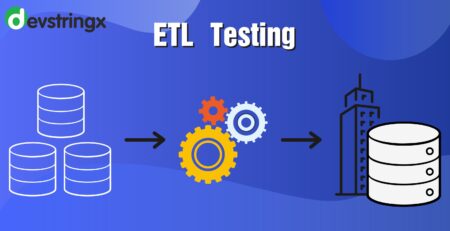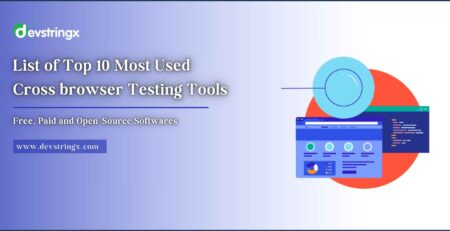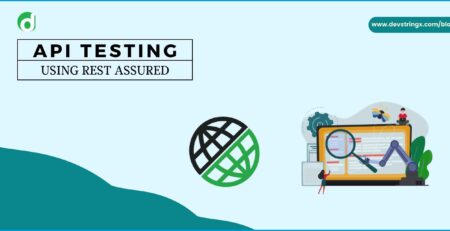Codeless Automated Testing: Everything You Need to Know – Devstringx
Codeless Automated Testing Guide
In the quick-paced world of software development, testing is crucial for guaranteeing the caliber and dependability of programs. Traditional testing methods frequently include writing code to create test scripts, which can be time-consuming and need a certain level of technical expertise. However, as technology advanced, a novel approach known as codeless automated testing surfaced, radically changing how testing carries out.
Introduction
Codeless automated testing, often known as no-code or low-code testing, is a testing methodology that enables testers and subject matter experts to create and execute automated tests without using a traditional programming language. Users can develop test cases with the use of drag-and-drop features, pre-built components, and reusable test modules using this method, which makes use of simple graphical interfaces and visual elements.
Benefits of Codeless Automated Testing
Codeless automated testing has numerous benefits, Here you find the top 04 advantages of using Codeless automated testing.
1) Increased Efficiency and Productivity
One of the primary benefits of codeless automated testing is the increase in productivity and efficiency in the software testing process. It is no longer necessary for testers to spend a lot of time writing and updating complex code scripts. They can concentrate on creating test scenarios and executing them using user-friendly interfaces to reduce the testing cycle.
2) Accessibility to Non-Technical Users
Automated testing without code helps non-technical users and technical users communicate more effectively. Even those without substantial programming experience can actively participate in the testing process because of its simple visual interfaces. This accessibility allows subject matter experts, business analysts, and other stakeholders to participate in the testing process, improving collaboration and accelerating feedback loops.
3) Rapid Test Creation and Maintenance
The creation and maintenance of test scripts is frequently labor-intensive for traditional coding-based testing techniques. Since no coding is required, codeless testing enables testers to create test cases quickly and simply. Additionally, improvements to an application can be made visually rather than requiring significant script alterations.
4) Enhanced Test Coverage
Testers can easily cover a wide range of scenarios thanks to codeless testing. Testers may simply design complicated test cases using a visual method that includes a variety of user interactions, data inputs, and validations. This extensive testing guarantees that applications are adequately tested, lowering the possibility of serious problems leaking into production.
Implementing Codeless Automated Testing
A systematic strategy must use to implement codeless automation testing successfully. The essential steps are as follows:
1) Test Planning and Strategy
Establishing sound test planning and strategy is essential before beginning codeless testing. Determine the goals, the parameters, and the kinds of tests that will be automated with codeless technologies.
2) Tool Selection
Pick a codeless testing tool that fits the needs of your project. The market offers a variety of instruments, each with unique characteristics and capacities. Based on aspects like support, scalability, integration possibilities, and ease of use, evaluate them.
3) Test Design and Development
Specify the scenarios to be tested in a test design. Design test scenarios, provide inputs, and forecast results using the codeless testing tool’s visual interface. Utilise test modules and reusable components to create tests quickly.
4) Test Execution and Reporting
Utilize the target application or system to run the codeless tests. Track the test execution procedure and compile the findings. The majority of codeless testing platforms have thorough reporting features that let you evaluate test results, spot flaws, and produce in-depth reports for stakeholders.
Codeless Testing Tools
Software solutions known as “codeless testing tools” eliminate the need to create difficult code, simplifying automated testing. These products create to make it simpler for individuals and groups to set up automated testing procedures without the need for in-depth programming expertise.
There are a number of well-liked codeless testing tools available, including:
1) TestCraft
Without writing any code, users may build and run automated tests using TestCraft’s codeless testing platform. It permits integration with a variety of testing frameworks and technologies and offers an intuitive user interface for developing test scenarios.
2) Testim
Another code-free testing option is Testim, which offers a visual interface for creating and managing automated tests. It provides the resources teams using testing projects need for communication, test data administration, and test recording.
3) Leapwork
Leapwork is a tool that enables users to create and run automated tests using visual modeling. It is appropriate for testing complex applications since it provides a wide selection of pre-built automation components and facilitates interaction with numerous systems and technologies. To get detailed information about the Leapwork Test automation platform feel free to check out our blog.
4) Appium Studio
A codeless testing solution made exclusively for testing mobile apps called Appium Studio. On iOS and Android devices, it offers a graphical interface for developing and conducting automated tests. It provides several mobile testing features, such as device synchronization and gesture detection.
5) Katalon Studio
Web and mobile testing capabilities combine in Katalon Studio, a comprehensive codeless testing solution. Along with capabilities like test data management, reporting, and connection with well-known development and testing tools, it provides a user-friendly interface for the creation, execution, and management of tests.
Every tool has different features and capabilities, so it’s important to compare them in light of the demands of your particular project and select the one that best meets your requirements.
Good to Read:- Manual Testing Tools to Enhance Product User Experience
Challenges and Limitations of Codeless Automated Testing
Codeless automated testing has many advantages, but it also has some drawbacks and restrictions. These consist of:
1) Dependency on Tool Capabilities
Codeless testing strongly depends on the features and capabilities offered by the selected tool. The efficiency of codeless testing may occasionally be constrained by the tool’s inability to meet particular testing criteria or complicated scenarios.
2) Learning Curve and Training
There is still a learning curve involved in comprehending the tool’s functionality and best practices, even though codeless testing intends to make testing accessible to non-technical people. To guarantee users can utilize the product efficiently, adequate training and support should offer.
3) Customization and Extensibility
In-depth customization possibilities or interactions with other testing frameworks might not always be available with codeless testing technologies. For projects that need sophisticated adaptations or connection with current automation frameworks, this can be a restriction.
Future of Codeless Automated Testing
Codeless automated testing appears to have a bright future. Codeless testing solutions anticipate getting stronger as technology develops, providing a wider variety of testing scenarios and applications. Processes for creating, maintaining, and analyzing tests can be improved even further by incorporating AI and ML capabilities into codeless testing solutions.
Conclusion
Codeless automated testing has transformed the way testing perform in the software development industry. It’s intuitive interfaces and visual approach enable testers and non-technical users to create and execute automated tests efficiently. By leveraging codeless testing tools, organizations can increase their testing efficiency, collaborate effectively, and achieve higher test coverage. As technology continues to evolve, the future of codeless automated testing holds even greater possibilities.
Frequently Asked Questions (FAQs)
- Are all apps appropriate for codeless automated testing?
For a variety of applications, including desktop, mobile, and web applications, codeless automated testing can employ. However, depending on the particular specifications of each application and the capabilities of the selected codeless testing tool, the applicability may change.
- Is it possible for codeless testing to fully replace conventional coding-based testing?
An alternative to conventional coding-based testing is codeless testing. Even though it has many advantages, there may still be instances where traditional code is required, such as for intricate integrations, specialized needs, or particular technological specifications.
- Can only non-technical individuals utilize codeless automated testing?
Codeless automated testing can use by technical people as well as non-technical people and designs to make testing accessible to non-technical people. The visual user interfaces and intuitive characteristics of codeless testing solutions let both technical and non-technical testers work more efficiently.
- What are the prices of codeless testing tools?
The cost of codeless testing tools varies according to their attributes, capabilities, and licensing policies. Some tools have free or open-source versions, while others require a subscription or license fee. Before choosing a tool that suits the requirements of your project and your budget, it is advisable to assess the costs and benefits.
- How might codeless automated testing support collaborative software development teams?
Codeless automated testing encourages collaboration by enabling non-technical stakeholders, such as subject matter experts and business analysts, to actively engage in the testing process. This relationship ensures that the tests cover the desired functionality and adhere to the business requirements through improved communication and shorter feedback loops.
Hire India’s Top-Rated Software Test Engineers from Devstringx Technologies to Enhance Your Product Quality & Improve User Experience.














